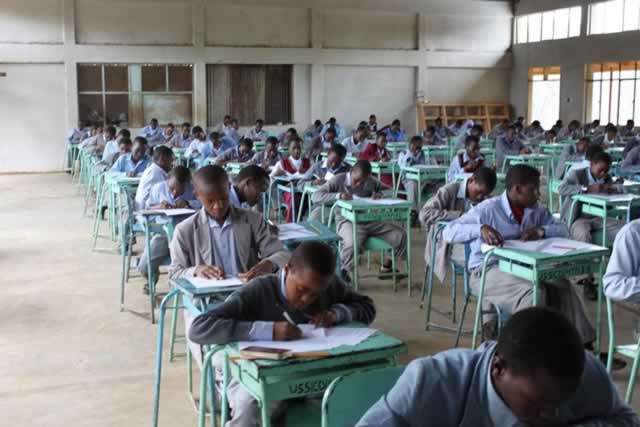Can communities benefit from wildlife resources?

Sydney Kawadza Senior Features Writer
On June 23, 2016, villagers of Machokoto Village in Madzivazvi Ward 28, in Gokwe North, woke up to a rare spectacle. A herd of elephants had, during the night, visited the village.
Telltale signs of the herd were everywhere.
The trail of destruction was evident, the dam wall had almost been breached and the spoor was quite visible.
Like what experts always say: one doesn’t need to see the elephants, their destructive force is good enough.
The elephants, which had invaded the nearby Chidoma Hills, became a rare sight for the villagers.
Most of the villagers had not seen the gigantic mammals in their entire lives.
The villagers – men, women and their children – descended on the hill to have a look at the elephants. The spectacle, however, ended in tragedy.
One of the elephants, after straying from the herd, charged at the villagers, targeting one woman.
The woman fell, diverting it to 44-year-old Pamela Chigiya. The mother of two, reportedly suffering from an injured leg, could not outpace the charging elephant.
She was snatched off her feet and violently thrown to the ground.
Chigiya became one of the 16 people killed in human-wildlife conflicts recorded in Zimbabwe last year alone.
Her husband, Naison Machokoto, narrated the story during a recent interview.
“I was not there, but I understand my wife could not run away and she was killed instantly,” he said.
Machokoto, however, laments the inaction from wildlife authorities in Gokwe.
“We reported the matter,but, no-one from parks came to assist. The police came and recorded statements and left. We have not heard from anyone since then,” he said.
“It seems all they care for are the animals, not us, the people. Just see how swift they can be when one of the elephants is killed, let’s say by poachers?”
He said the elephants came from Chirisa National Park.
“The last time another herd visited was in February and the elephants damaged crops to the extent that some villages will starve despite the good rains we received,” he said.
The Gokwe human-wildlife problems are mainly due to the settlement of people near animal conservation areas.
Human settlements are encroaching into wildlife migratory corridors.
According to the African Wildlife Foundation, for much of the year, wildlife travels from park to park, and even country to country, following migration routes, searching for food and seeking calving grounds.
“While in a park, wildlife is protected and has sufficient resources for survival but once it travels outside of those boundaries, there is no assurance of security.”
The foundation states while people are trying to improve their livelihoods and economies, the once-pristine land in Africa is quickly being converted into grazing grounds for livestock and tilled for agricultural purposes.
Mr Charles Ndondo, a safari operator and climate expert, attributed the human-wildlife conflict in Gokwe to people settling themselves right in the wildlife corridors.
“There is need for proper land use management plans by rural district councils while communities should abide by these boundaries. Animals like elephants have their usual movements and pathways during the year.
“So when they find their usual pathways blocked they either, fight those whom they find on the way or end up looking for other pathways and at most now passing through homesteads and causing havoc.”
He said wild animals are aggressive especially when provoked, causing serious conflicts.
“People also enter into wildlife zones for poaching purposes thereby disturbing them and at times they end up running out of those zones into communal lands creating more conflicts,” he said.
Mr Sungano Ndlovu, a farmer and businessman, said problems with wild animals in Gokwe were tremendous.
He, however, called for community awareness programmes for villagers to understand and appreciate wildlife.
“We know there is a certain percentage we get when hunters come to Zimbabwe for trophies. There is a committee, which sits to decide on what should be done with the money.
“Matunguru Primary School recently received cement for their classroom blocks but we need to benefit more for the people to appreciate the animals,” he said.
Gokwe-Kubuyani MP Leonard Chikomba said he gets frequent reports of the conflicts.
“The Zimbabwe National Parks and Wildlife Authority should protect people from the wild animals escaping from game reserves.”
He said benefits from trophy hunting was erratic.
“Yes, we get some money sometimes and when we have rampaging animals, they give people meat after killing them.
“Hunters and safari operators have been assisting with the rehabilitation of water reservoirs. However, they haven’t been assisting us lately.”
He said stakeholders could assist in repairing roads in the area.
MP Chikomba said efforts should be made to cordon and fence off wildlife areas to avoid these conflicts.
“We don’t hate the animals but we must also value human life more.
“We still want the animal reserves here because we can benefit.
“If we report that an animal has escaped, they should respond quickly so that there is minimal harm and damage,” he said.
The tough economic conditions have seen a lot of confusion regarding the role of rural district councils in wildlife issues.
Villagers have accused local authorities of stealing proceeds from hunting quarters.
Gokwe South Rural District Council chief executive Mr Sailas Velani, however, acknowledged receiving revenue from the quota of two elephants per hunting season.
“The funding is distributed to the affected wards which boarder Chirisa National Park.
“However, the operations have been affected by settlements. Hunting has been difficult and the quality of trophies compromised resulting in aborted hunts.
“Council has, however, applied to create a buffer area so that hunting will be undertaken freely without fear of injuring humans.”
Mr Velani said they expected the buffer zone to avert human animal conflict.
CAMPFIRE Project executive director Mr Charles Jonga said hunting is the only activity being carried out in the district.
“However, the district has suffered habitat loss over the years, mainly due to human encroachment into the one kilometre buffer zone.
“Benefits to communities have been limited as elephant hunting is mostly at night along the Nemangwe, Sahai, Jiri wards on the boundary with the Chirisa and Sengwa Wildlife estates under national parks.
“Night hunting of problem elephants occurs in some CAMPFIRE areas as a special arrangement, but is less attractive than normal day hunting which provides a client with the opportunity to choose a good trophy.”
Mr Jonga, however, said the de-gazetting of part of Chirisa Safari Area has opened up new opportunities for communities to benefit from wildlife in parts of the Defe area that is not suitable for cropping.
“A good partnership between Gokwe Rural District Council and a defined number of communities affected by increasing human and wildlife conflict in the area is necessary for this to happen.
“This also requires not just community awareness, but also political will and clear tenure arrangements,” he said.
Zimbabwe Tourism Authority corporate affairs head Mr Sugar Chagonda said while conflicts were unfortunate people could benefit from the animals.
“Our deductions are that people are eager to see and consume our wildlife products. The challenge for us as tourism authorities is to promote domestic tourism, vigorously,” he said.
He said the ZTA would come up with tourism packages tailor-made for local people.
“We need to make our products accessible to everyone who would want to see these pristine natural resources,” he said.
Gokwe South Rural District Council came into existence as a result of the “Amalgamation” Act (Rural District Councils Act of 1988) as implemented from July 1993.
The district lies in the north-western part of Midlands Province.
It is bordered by Matabeleland North to the south and west, Gokwe North Rural District Council to the north, Mashonaland West Province to the east, and Zivagwe Rural District Council to the south.
Up to 71 percent of the district is classified as communal, 15 percent national parks, nine percent forestry, and five percent small-scale commercial farming.
Chirisa National Park is part of the faunal reservoir of the Hwange-Sanyati Biological Corridor, which has various migratory routes of a number of species.
However, infrastructural developments and expanding human settlements are causing wildlife to come into frequent contact with humans, resulting in human-wildlife conflict.
In his presentation during the Kavango-Zambezi Trans-frontier Conservation Area Symposium held in Victoria Falls, former World Wildlife Foundation social economics specialist Mr Mambo Ignatius Musona said natural resource use presents the last line of defence in the survival of such communities.
“Most of the HSBC area is too dry for rain-fed crop production. Households on its communal lands grow grain crops (maize and millet) for food security and some cash crops such as cotton,” said Mr Musona.
It was, therefore, imperative for authorities to make sure that communities benefit from wildlife conservation activities.
- Feedback: [email protected]









Comments